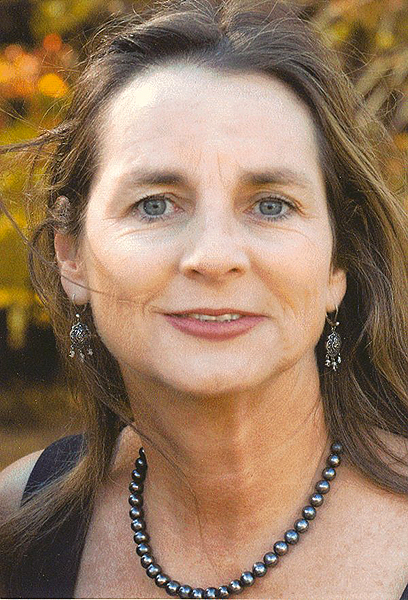
Seek the truth. Embrace family. Fall in love. And don’t shy away from the eccentric.
These are all lessons East Hampton-based author Elizabeth Laytin has learned over her 52 years—and wisdom she passes along in her debut novel, “Come Here, Go Away.”
“It feels good to have all these teeny pieces of inspiration come together in one place,” she said during a telephone interview last week. “But it’s a work of fiction. It’s not based on my life except the horseback riding and working in Newport, Rhode Island as a waitress in 1974.”
Ms. Laytin first stumbled across the inspiration for her book’s protagonist, 15-year-old Marlee, while horseback riding through the Virginia countryside in 1971. She saw a girl sitting on a fence, gazing across the road with a forlorn expression etched into her young face.
“I was 17 and I just thought, ‘Wow, this is a girl my same age and she doesn’t have the life I have. Her family is really struggling,’” Ms. Laytin recalled. “Her family looked like they were just about to lose everything. That was a long time ago.”
The young-adult book is set during the 1970s recession, which hits Marlee’s family and their Virginian horse business hard. To add to their troubles, the young girl’s mother leaves without explanation and her father is forced to uproot them to Newport.
The move doesn’t sit well with Marlee. She becomes determined to uncover why her mother left and sets out to tackle a number of mysteries in her life.
“Marlee is feisty and brooding. She’s really full of this discontent, this kind of not happy with her current situation, uncomfortable in her surroundings,” Ms. Laytin said. “She’s a seeker of the truth, which is not very much fun because the truth is elusive.”
In her downtime, Marlee busies herself with introspective misfits: lobster fisherman Billy Budd, and Lenn Scott, a nightclub piano player who snares her affections.
Billy Budd may be fictional, but Lenn Scott is far from it.
“Lenn was a real guy who was about 10 years older than I, when I went to Brown, and I quote, unquote, dated him,” Ms. Laytin chuckled. “He did wear a white tuxedo, as he does in the book, and he looked to me a Robert Redford type. And I was madly in love with him the second I saw him at age 20. I was a junior in college and I kind of fell in love with him. He is, and was, kind of eccentric, if you will. I don’t want to call him crazy, but he did a lot of crazy things. But he could play without music. He was, and still is, a very brilliant piano player.”
When Marlee isn’t with Lenn, the reader follows her around the recession-ridden town and in and out of seedy fishermen bars, which the author actually frequented while waitressing in Newport, she said.
“The atmosphere of those places really intrigued me—shutting doors and vacant stores and dingy bars,” she said. “I’ve always had a fascination with dark, kind of grungy bars with pool tables and guys sitting there in the corners who had been there for several years.”
After graduating from college, Ms. Laytin moved to Manhattan and began visiting the East End in 1981. And a mysterious house that she first called home also found its way into her book.
“It was a great, big 1920 house on Shore Drive in Remsenburg, and my first husband told me there was a ghost named Michael when I first met him,” Ms. Laytin said. “The ghost would play tricks on guests. One night, during the scariest part of ‘Werewolf in London,’ there was a huge crash in the attic. So four of us adults crept up there because no one wanted to stay downstairs by themselves.”
Now married to her second husband, Jeffrey, and the mother of two children— 17-year-old Sylvia, who is a senior at Ross School, and Nevada, 24, who lives in Manhattan—Ms. Laytin said she is living by the words she writes.
“Never give up and seek answers, even when everyone is saying that you don’t need to know. Family connections become even more important the older you get. Romance is good. Falling in love is a good thing,” she laughed. “Seek out crazy people. Be sure to look at the crazy people and find out what they have to tell you about art and being a non-conformist.”